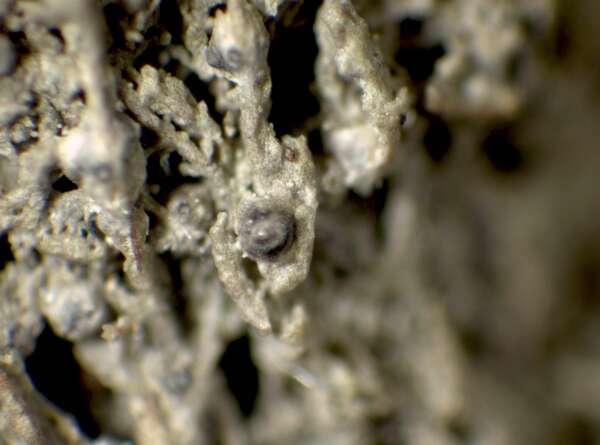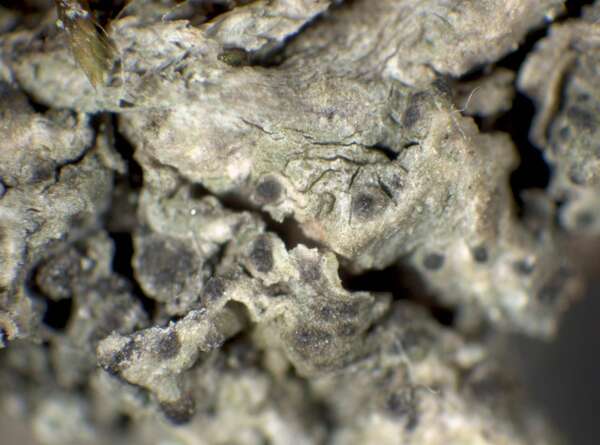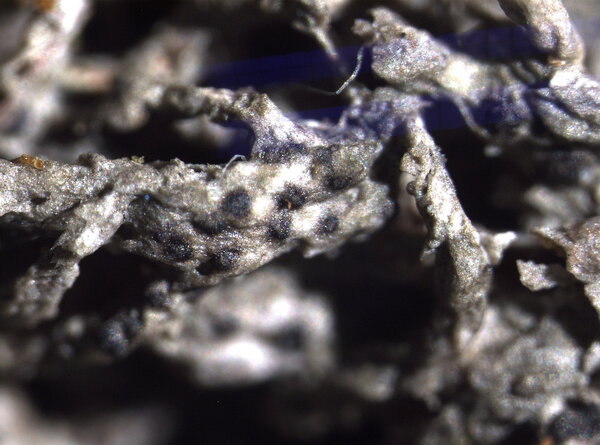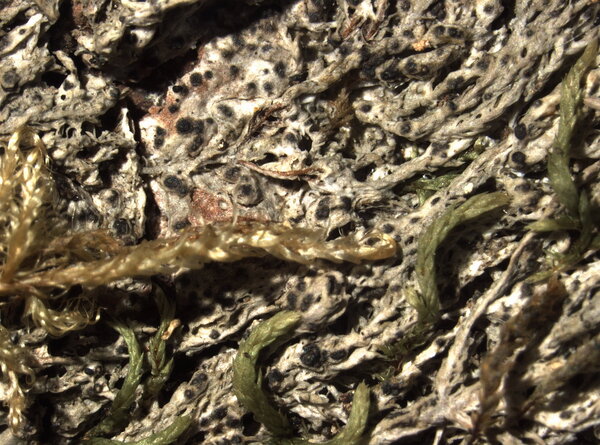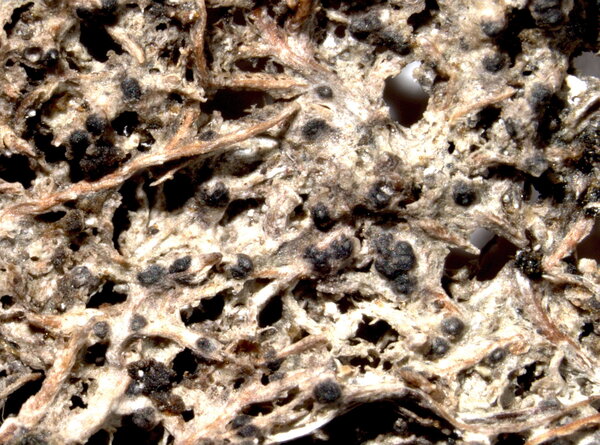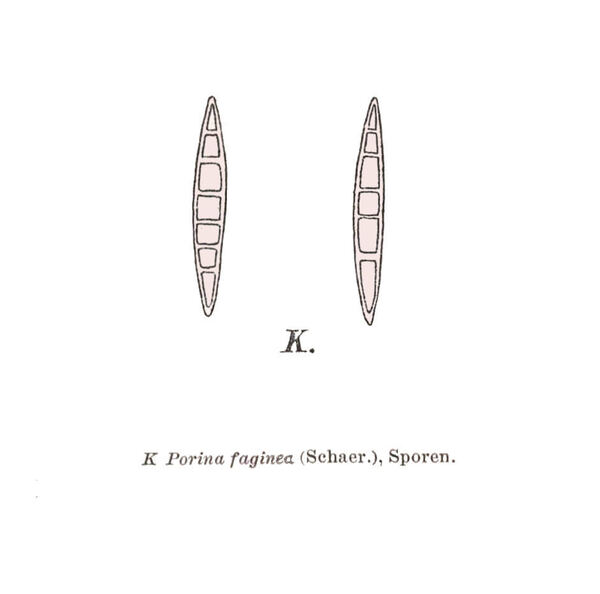Swinscowia stigmatella (Ach.) S.H. Jiang, Lücking & Sérus.
in Hongsanan & al., Fungal Divers.: 10.1007/s13225-020-00462-6, 140, 2020. Basionym: Lichen stigmatellus Ach. - Lichenogr. Suec. Prodr.: 15, 1799.
Synonyms: Arthopyrenia faginea (Schaer.) Swinscow; Arthopyrenia stigmatella (Ach.) A. Massal.; Opegrapha thuretii Hepp; Porina cinerea (Pers.) Zahlbr.; Porina faginea (Schaer.) Arnold; Porina muscorum A. Massal.; Porina tenebricosa A. Massal.; Porina thuretii (Hepp) Lettau; Pyrenula muscorum var. faginea (Schaer.) Hepp; Sagedia tenebricosa (A. Massal.) Jatta; Strigula stigmatella (Ach.) R.C. Harris; Verrucaria cinerea Pers. non (L.) Humb.; Verrucaria stigmatella (Ach.) Ach.; Verrucaria thuretii var. vulgaris Garov.
Distribution: N - VG (TSB 2192), Frl (Roux & Sérusiaux 2004, Tretiach 2014), Ven (Lazzarin 2000b, Nascimbene 2008c, Nascimbene & al. 2013b), TAA (Nascimbene & al. 2007b), Lomb, Piem (Isocrono & al. 2004, Giordani & Malaspina 2016), Emil (Tretiach & al. 2008, Tretiach 2014, Fariselli & al. 2020), Lig. C - Tosc, Laz (Stofer 2006). S - Camp (Ravera & Brunialti 2013), Bas (Nimis & Tretiach 1999, Potenza & al. 2010), Si (Nimis & al. 1994).
Description: Thallus crustose, thin, partly endosubstratic, greenish grey to ash-grey, usually continuous. Perithecia black, 0.3-0.45 μm across, globose, one-quarter to half-immersed, partly covered by a thin thalline layer when young. Involucrellum dark brown, dimidiate, distinct from the exciple when young, later usually appearing as a thickening of the upper part of exciple, the latter colourless to pale brown in upper part; hamathecium of thread-like paraphysoids which are mostly simple, and only rarely branched and anastomosing, except where adjacent to the exciple. Asci 8-spored, narrowly clavate, bitunicate-fissitunicate, shortly stalked at base, the apex thickened into a tholus, with a narrow ocular chamber, I-. Ascospores (5-)7(-9)-septate, hyaline, fusiform, 25-35(-40) x (3.5-)5.5-7(-8) μm, rarely also with a longitudinal septum, without a perispore. Pycnidia, often of two types. Macropycnidia black, c. 0.1 μm across; macroconidia subapically inserted on the conidiogenous cell, 5-7-septate, not or scarcely constricted at the septa, cylindrical, 20-30 x 4-6 μm, with apical gelatinous appendages. Micropycnidia c. 0.05.0.1 mm across; microconidia 2.5-3 x 0.5-1.5 μm. Photobiont trentepohlioid. Spot tests: thallus K-, C-, KC-, P-, UV-. Chemistry: thallus without lichen substances.Note: a temperate species found on bark and on epiphytic mosses on basal parts of trunks of deciduous trees, especially Fagus.
Growth form: Crustose
Substrata: bark
Photobiont: Trentepohlia
Reproductive strategy: mainly sexual
Commonnes-rarity: (info)
Alpine belt: absent
Subalpine belt: absent
Oromediterranean belt: absent
Montane belt: rare
Submediterranean belt: extremely rare
Padanian area: absent
Humid submediterranean belt: very rare
Humid mediterranean belt: extremely rare
Dry mediterranean belt: absent
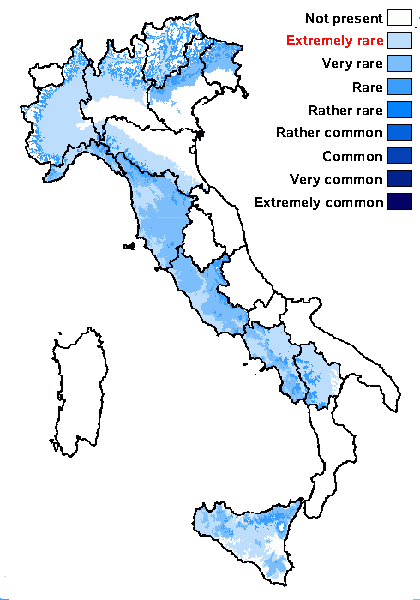
Predictive model
Herbarium samples
Growth form: Crustose
Substrata: bark
Photobiont: Trentepohlia
Reproductive strategy: mainly sexual
Commonnes-rarity: (info)
Alpine belt: absent
Subalpine belt: absent
Oromediterranean belt: absent
Montane belt: rare
Submediterranean belt: extremely rare
Padanian area: absent
Humid submediterranean belt: very rare
Humid mediterranean belt: extremely rare
Dry mediterranean belt: absent

Predictive model
| Herbarium samples |
 Index Fungorum
Index Fungorum
 GBIF
GBIF
